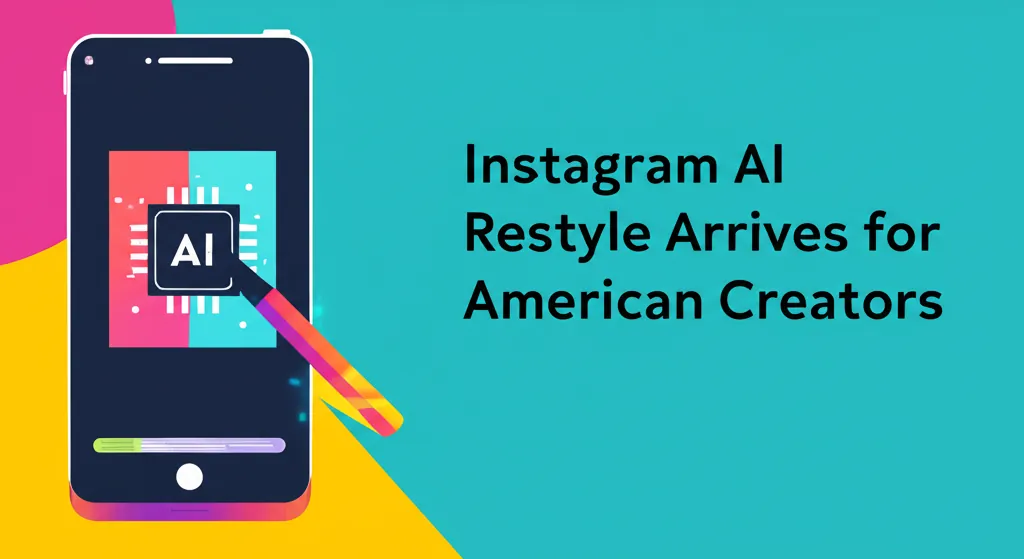Developer Offer
Try ImaginePro API with 50 Free Credits
Build and ship AI-powered visuals with Midjourney, Flux, and more — free credits refresh every month.
Why Your Headphones Are The Future Of AI
In the tech world, the rise of AI has triggered a race to create entirely new devices. We're seeing everything from head-mounted headsets and glasses to experimental pins, necklaces, and even a secret project from former Apple designer Jony Ive and OpenAI.
But in this rush for the next big thing, we might be overlooking the ultimate AI device—one that most of us already own and use daily. It's a piece of technology that dates back to the 19th century: headphones.
Dino Bekis, vice president of wearables at Qualcomm, believes integrating AI is giving headphones a new lease on life. We are already seeing the beginning of this evolution with devices like Apple's latest AirPods Pro.
Smarter Listening The Future of Headphones
According to Bekis, AI's impact on headphones is twofold. First, it will enhance existing features we're familiar with, like active noise cancellation (ANC) and transparency modes. Instead of manually switching between these modes, headphones will use AI and onboard sensors to understand your environment and adjust dynamically.
Imagine your headphones recognizing your name being called and alerting you, even with ANC on. They could also warn you of traffic dangers or someone approaching from behind while you're on a call. The second, and more significant, impact is how we'll interact with AI agents. Bekis argues that conversation is the most natural way to communicate with these autonomous personal assistants, and the high-quality microphones and speakers in headphones make them the perfect tool for the job.
"Earbuds or headphones are really yesterday's technology that's suddenly been reinvented and is becoming the primary way we're going to be interfacing with agents moving forward," says Bekis.
How Big Tech Is Transforming Headphones
While not all headphone makers are focused on AI, smartphone manufacturers are leading the charge. Companies like Samsung, Google, and Apple have been steadily adding AI-powered capabilities to their audio products. Google's Pixel Buds 2, for example, are built around the Gemini AI assistant, allowing you to activate it with your voice to summarize emails and more.
 Apple's AirPods Pro 3 come with new AI-powered live translation. (Cole Kan/CNET/Apple)
Apple's AirPods Pro 3 come with new AI-powered live translation. (Cole Kan/CNET/Apple)
Apple recently introduced live translation with its AirPods Pro 3, a feature that translates a conversation in real-time. Reports also suggest Apple is exploring adding AI-powered cameras to future AirPods that could respond to gestures. It's clear that major tech players see headphones as more than just audio devices, much like they once saw phones as more than just tools for making calls.
Why Headphones Outshine Other AI Wearables
The strongest case for headphones as the ultimate AI wearable is their sheer popularity. Nearly everyone owns a pair, which can't be said for smart glasses or watches. If you don't already wear glasses, an AI feature is unlikely to convince you to start. Smart glasses also face challenges with battery life, fitting prescription lenses, and privacy concerns related to their cameras. After years of development, most are still not as sleek or comfortable as regular glasses, with the Meta Ray-Bans being a notable exception.
Smartwatches and fitness bands are more comfortable but are too far from our faces to provide detailed sensory feedback without looking at a screen. Headphones, particularly earbuds, are uniquely positioned next to a major sensory organ, allowing for both complex input and output. They are discreet, easy to use, and don't require frequent charging.
 Smart glasses still face significant hurdles before becoming mainstream. (Katie Collins/CNET)
Smart glasses still face significant hurdles before becoming mainstream. (Katie Collins/CNET)
The Unbeatable Advantage Social Acceptance and Market Size
CCS Insight Analyst Leo Gebbie highlights another critical factor: social acceptance. "Headphones have become incredibly commonplace," he says. They don't create a barrier between you and the world, nor do they raise privacy alarms the way a camera-equipped device might. There's no new user behavior to learn.
This gradual, almost invisible evolution aligns perfectly with the tech industry's vision of AI as a subtle, ambient force in our lives. The market data further solidifies this point. Forecasts from sources like SNS Insider and Mordor Intelligence project the global headphone market to exceed $100 billion by the early 2030s. In contrast, the smart glasses market is estimated to reach around $18.4 billion in the same timeframe.
While companies will continue to explore new AI devices, headphones are a familiar form factor and a safer bet. Instead of reinventing the wheel, the companies that embrace the untapped potential of headphones are likely to see these devices become the defining wearable of the AI age.
Compare Plans & Pricing
Find the plan that matches your workload and unlock full access to ImaginePro.
| Plan | Price | Highlights |
|---|---|---|
| Standard | $8 / month |
|
| Premium | $20 / month |
|
Need custom terms? Talk to us to tailor credits, rate limits, or deployment options.
View All Pricing Details

